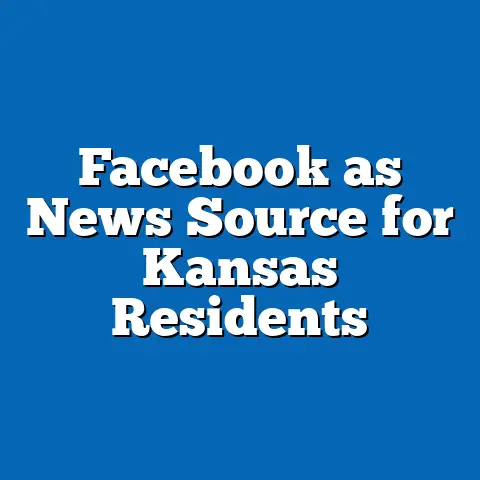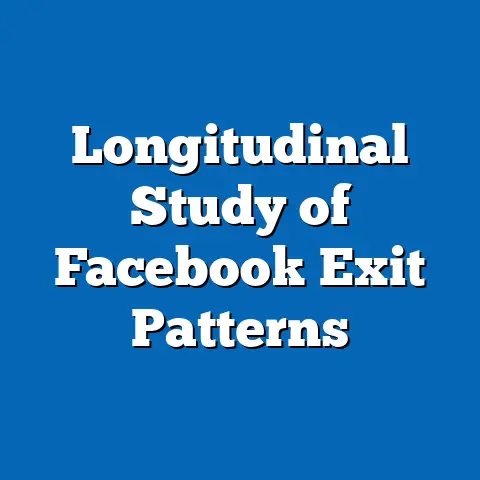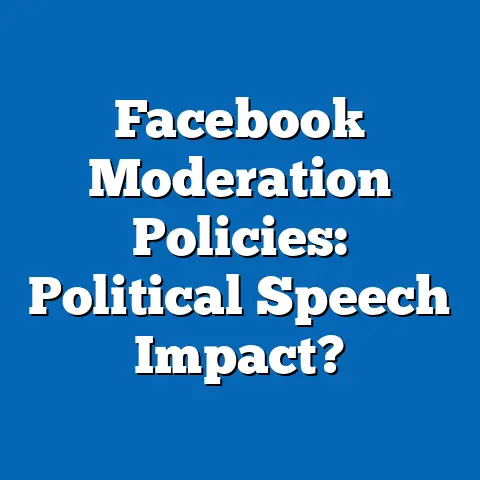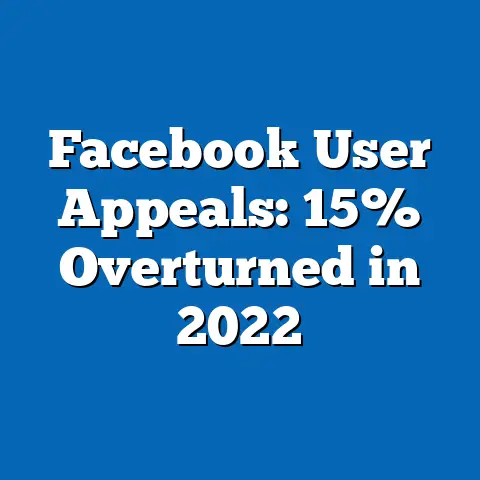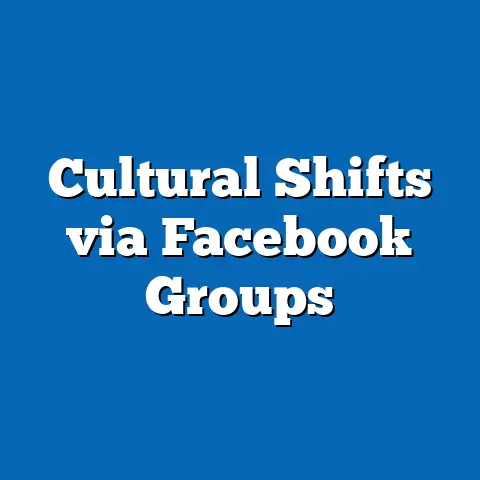Impact of Facebook Algorithm on User Engagement
In the grand theater of the internet, where billions of voices clamor for attention, there exists an invisible puppet master pulling the strings of visibility and interaction: the algorithm. Among the most influential of these digital arbiters is the Facebook algorithm, a complex system that dictates what content appears on users’ feeds, shaping not only individual experiences but also the broader cultural and social landscape. Since its inception, this algorithm has evolved from a simple chronological feed into a sophisticated machine learning model, wielding immense power over user engagement—a metric that defines the platform’s success and influence.
User engagement, broadly defined as the interactions users have with content (likes, comments, shares, and time spent on the platform), is the lifeblood of social media. It determines not only the platform’s revenue through targeted advertising but also influences how information, opinions, and trends spread across societies. Understanding the impact of the Facebook algorithm on user engagement requires delving into its historical evolution, its defining characteristics, and the broader societal implications of its opaque decision-making processes.
Historical Context: The Evolution of the Facebook Algorithm
Facebook, launched in 2004 by Mark Zuckerberg and his Harvard classmates, began as a simple platform for connecting college students. In its infancy, the platform’s feed was a straightforward chronological stream of posts from friends and pages users followed. Engagement during this period was organic, driven by genuine interest rather than algorithmic curation.
The introduction of the News Feed in 2006 marked a pivotal shift, aggregating content in one place but still adhering to a largely chronological order. However, as Facebook’s user base exploded—reaching 100 million users by 2008—the sheer volume of content necessitated a more sophisticated approach to curation. This led to the debut of the first major algorithmic update in 2009, known as EdgeRank, which prioritized content based on affinity (the relationship between the user and the content creator), weight (the type of content, such as photos or links), and time (how recent the post was).
By 2013, Facebook had shifted to a machine learning-based algorithm, incorporating hundreds of factors to predict what content would be most relevant to users. This transition coincided with significant societal events, such as the Arab Spring (2010-2012), where social media played a critical role in mobilizing protests, highlighting the platform’s growing influence on real-world outcomes. The algorithm began to prioritize “meaningful interactions” over passive consumption, a change cemented in 2018 when Zuckerberg announced a focus on content from friends and family over public pages, responding to criticism about the spread of misinformation during the 2016 U.S. presidential election.
These historical developments reflect a broader trend in digital platforms: the move from user-driven to algorithm-driven engagement. Each update to the Facebook algorithm has been shaped by technological advancements, user feedback, and external pressures, including regulatory scrutiny and public outcry over issues like privacy and misinformation. Understanding this evolution is crucial to grasping how the algorithm influences engagement today.
Defining Characteristics of the Facebook Algorithm
The modern Facebook algorithm is a black box, with its exact workings closely guarded by Meta, the platform’s parent company. However, through public statements, research, and reverse-engineering efforts by data scientists, several key characteristics have emerged. At its core, the algorithm is designed to maximize user engagement by predicting and prioritizing content that will keep users on the platform longer.
One defining feature is personalization, where the algorithm tailors content based on a user’s past behavior, preferences, and interactions. This includes data points such as liked pages, clicked links, and even the time spent viewing certain posts. A 2021 report by the Pew Research Center found that 64% of U.S. adults believe social media platforms show them content based on their interests, a testament to the algorithm’s personalization capabilities.
Another characteristic is the emphasis on “meaningful interactions,” a term Facebook uses to describe content that sparks conversations and emotional responses. Posts that elicit comments or shares are often prioritized over those that merely garner likes, as they are seen as more engaging. However, this can lead to the amplification of controversial or polarizing content, as it tends to provoke stronger reactions—a phenomenon researchers have linked to increased divisiveness online.
The algorithm also incorporates a feedback loop, where user engagement with certain types of content reinforces the algorithm’s decision to show more of the same. This creates echo chambers, where users are repeatedly exposed to similar viewpoints, potentially narrowing their worldview. A 2018 study by MIT researchers found that false news stories on Facebook were 70% more likely to be shared than true stories, partly due to the algorithm’s preference for emotionally charged content.
Finally, the algorithm operates within a commercial framework, prioritizing content that aligns with advertising goals. Sponsored posts and ads are seamlessly integrated into feeds, often indistinguishable from organic content, ensuring high visibility for paying entities. This commercial bias underscores the tension between user experience and revenue generation, a dynamic that shapes engagement patterns.
Mechanisms of User Engagement: How the Algorithm Works
To understand the impact of the Facebook algorithm on user engagement, it’s essential to dissect how it operates on a practical level. The algorithm processes vast amounts of data in real time, using machine learning models to rank content based on relevance scores. These scores are calculated using thousands of signals, including user demographics, past interactions, and even device type.
One key mechanism is content prioritization, where the algorithm decides which posts appear at the top of a user’s feed. According to a 2020 study by the University of Southern California, content from close connections and highly interactive pages is more likely to be prioritized, while content from less familiar sources often gets buried. This creates a feedback loop where users engage more with familiar content, further reinforcing the algorithm’s choices.
Another mechanism is the use of engagement bait—content designed to provoke reactions through tactics like “react if you agree” or “tag a friend who needs to see this.” While Facebook has attempted to crack down on such posts since 2017, they remain a prevalent strategy for creators seeking visibility. This highlights how the algorithm can incentivize manipulative content creation, as users and pages adapt to its rules to maximize reach.
The algorithm also employs A/B testing and iterative updates to refine its predictions. For instance, if a new feature (like Stories or Reels) is introduced, the algorithm may temporarily boost its visibility to gauge user response. This adaptability ensures that the platform remains responsive to changing user behaviors, but it also means that engagement patterns are in constant flux, often leaving users and content creators struggling to keep up.
Importantly, the algorithm’s impact on engagement is not uniform across demographics. Younger users, for instance, may engage more with visual content like videos, while older users might prefer text-based posts or news articles, as noted in a 2022 report by Statista. This demographic variation underscores the algorithm’s role in segmenting audiences, tailoring engagement strategies to specific groups.
Societal Implications: The Broader Impact of Algorithmic Engagement
The influence of the Facebook algorithm extends far beyond individual user experiences, shaping societal dynamics in profound ways. One of the most significant implications is its role in information dissemination, particularly during critical events like elections or public health crises. The algorithm’s tendency to prioritize sensational content has been linked to the rapid spread of misinformation, as seen during the 2016 U.S. election and the COVID-19 pandemic.
A 2019 study by Avaaz, a global advocacy group, found that health misinformation on Facebook was viewed over 3.8 billion times in a single year, often amplified by the algorithm’s engagement-driven design. This raises ethical questions about the platform’s responsibility to mitigate harm, especially when engagement metrics conflict with public good. Regulatory bodies, such as the European Union, have responded with measures like the Digital Services Act (2022), which aims to hold platforms accountable for algorithmic transparency.
Another societal impact is the exacerbation of social and political polarization. By creating echo chambers, the algorithm limits exposure to diverse perspectives, reinforcing existing biases. A 2021 report by the Center for American Progress noted that 70% of Americans believe social media contributes to political division, with algorithmic curation often cited as a key factor. This polarization can erode trust in institutions and fuel societal unrest, as seen in events like the January 6, 2021, U.S. Capitol riot, where Facebook played a role in organizing and amplifying extremist content.
The algorithm also influences cultural trends and norms by determining which voices gain prominence. Influencers, brands, and activists must navigate its rules to reach audiences, often prioritizing engagement over authenticity. This can lead to a homogenized cultural landscape where only algorithm-friendly content thrives, marginalizing niche or unconventional perspectives. A 2020 study by the University of Amsterdam found that small creators often struggle to gain visibility unless they conform to trending formats, highlighting the algorithm’s gatekeeping power.
In the economic sphere, the algorithm shapes digital marketing and advertising, a sector projected to reach $700 billion globally by 2025, according to eMarketer. Businesses rely on Facebook’s algorithmic targeting to reach specific demographics, but this raises privacy concerns, especially following scandals like Cambridge Analytica (2018), where user data was exploited for political ads. The tension between engagement-driven revenue and user trust remains a central challenge for the platform.
Psychological and Behavioral Effects on Users
The Facebook algorithm’s impact on user engagement also manifests in psychological and behavioral outcomes. The platform’s design, driven by the algorithm, often exploits cognitive biases like the dopamine-driven reward system, where users seek validation through likes and comments. A 2017 study published in the journal Computers in Human Behavior found that excessive social media use, fueled by algorithmic engagement tactics, is associated with increased anxiety and depression among young adults.
The algorithm’s personalization can also create a “filter bubble,” where users are insulated from challenging or uncomfortable content. While this may increase short-term engagement by keeping users comfortable, it can hinder critical thinking and empathy over time. Research by Eli Pariser, who coined the term “filter bubble” in 2011, suggests that such isolation contributes to a fragmented society where shared understanding becomes elusive.
Behaviorally, the algorithm influences how users interact with each other and the platform itself. The prioritization of emotional content can lead to performative outrage or virtue signaling, as users tailor their posts to maximize visibility. A 2022 survey by YouGov found that 58% of social media users admit to posting content primarily for engagement rather than genuine expression, illustrating the algorithm’s role in shaping online behavior.
Moreover, the algorithm can create a sense of dependency, as users feel compelled to check their feeds frequently to stay updated on curated content. This “fear of missing out” (FOMO) drives higher engagement but at the cost of user well-being, as noted in a 2021 study by the University of Pennsylvania linking social media use to decreased life satisfaction. These psychological effects underscore the need for greater transparency and user control over algorithmic curation.
Comparative Analysis: Facebook vs. Other Platforms
While Facebook’s algorithm is unique in its scale and impact, comparing it to other social media platforms offers valuable insights into engagement dynamics. Twitter (now X), for instance, also uses an algorithmic feed but places greater emphasis on real-time trends and public discourse, often prioritizing viral content over personal connections. A 2022 study by the Knight Foundation found that Twitter users are more likely to encounter diverse viewpoints than Facebook users, suggesting that algorithmic design significantly influences engagement patterns.
Instagram, another Meta-owned platform, focuses heavily on visual content, with its algorithm prioritizing aesthetically pleasing posts and Stories. This visual bias drives different engagement behaviors, such as higher interaction with influencer content, compared to Facebook’s text-heavy environment. Data from Hootsuite (2023) indicates that Instagram users spend an average of 11.7 hours per month on the app, slightly less than Facebook’s 19.6 hours, reflecting variations in algorithmic stickiness.
TikTok, a relative newcomer, has redefined engagement with its highly addictive “For You” page, driven by an algorithm that prioritizes short-form video content based on user watch time. Unlike Facebook, which balances personal connections with public content, TikTok’s algorithm is almost entirely discovery-driven, leading to rapid viral trends. A 2023 report by Sensor Tower found that TikTok users average 23.3 hours per month on the app, surpassing Facebook and highlighting the power of novel algorithmic approaches.
These comparisons reveal that while all platforms aim to maximize engagement, their algorithmic priorities—whether personal relevance, visual appeal, or discovery—shape user behavior in distinct ways. Facebook’s hybrid focus on personal and public content creates a unique engagement ecosystem, balancing intimacy with scale, but also amplifying societal challenges like misinformation more acutely than smaller or niche platforms.
Workplace and Economic Implications
The Facebook algorithm’s influence extends into the workplace and broader economy, particularly for businesses and content creators. For companies, the algorithm determines the reach of organic posts and the effectiveness of paid ads, making it a critical factor in digital marketing strategies. A 2021 survey by Social Media Examiner found that 78% of marketers struggle with declining organic reach on Facebook, forcing them to invest more in paid content to maintain engagement.
For individual creators and small businesses, the algorithm can be both an opportunity and a barrier. While viral content can catapult unknowns to fame, the constant need to adapt to algorithmic changes creates instability. A 2022 report by Buffer noted that 65% of content creators feel pressured to produce content daily to maintain visibility, leading to burnout and reduced quality.
Economically, the algorithm underpins a multi-billion-dollar advertising industry, with Meta reporting $114.9 billion in ad revenue in 2022. However, this reliance on algorithmic targeting raises ethical concerns about data privacy and consumer manipulation, as businesses exploit user engagement for profit. Governments and regulators are increasingly scrutinizing these practices, with potential implications for how algorithms are designed in the future.
In the workplace, the algorithm influences how employees and employers interact with social media. Many companies use Facebook for recruitment and branding, but the algorithm’s personalization can limit reach to diverse talent pools. Additionally, employee engagement with polarizing content during work hours, amplified by the algorithm, can impact workplace culture and productivity, as noted in a 2020 study by the Society for Human Resource Management.
Diversity and Nuance Within User Engagement
It’s critical to acknowledge the diversity of user experiences with the Facebook algorithm, as engagement patterns vary across demographics, cultures, and contexts. For instance, users in developing countries, where Facebook often serves as a primary internet portal through initiatives like Free Basics, may engage differently due to limited data access and localized content. A 2021 report by DataReportal found that 68% of users in Sub-Saharan Africa access Facebook via mobile data, influencing engagement with lightweight content over data-heavy videos.
Cultural differences also shape how users respond to algorithmic curation. In collectivist societies, such as those in East Asia, users may prioritize group-oriented content, while individualistic cultures, like the U.S., might engage more with personal expression. A 2019 study by Hofstede Insights highlighted that cultural values significantly influence social media behavior, complicating the algorithm’s one-size-fits-all approach.
Age and socioeconomic status further contribute to engagement diversity. Gen Z users, for instance, often use Facebook alongside newer platforms like TikTok, engaging sporadically, while older Millennials may rely on it for community groups and news, according to a 2023 Pew Research Center survey. Similarly, users with lower incomes may engage less due to limited internet access, underscoring the digital divide’s impact on algorithmic reach.
These nuances remind us that while the algorithm aims for universal engagement, its effects are far from uniform. Meta’s challenge lies in balancing broad appeal with sensitivity to diverse user needs, a task complicated by the opaque nature of its system.
Forward-Looking Insights: The Future of Algorithmic Engagement
As we look to the future, the impact of the Facebook algorithm on user engagement will likely intensify, driven by advancements in artificial intelligence and growing societal scrutiny. Emerging technologies, such as generative AI and augmented reality, could further personalize content, potentially deepening engagement but also exacerbating issues like addiction and misinformation. A 2023 forecast by Gartner predicts that by 2025, 50% of social media interactions will involve AI-generated content, raising questions about authenticity and trust.
Regulatory pressures will also shape the algorithm’s trajectory. Initiatives like the EU’s Digital Markets Act and proposed U.S. legislation on platform accountability could force Meta to increase transparency or allow user control over feed curation. Such changes might reduce engagement in the short term but could foster long-term trust, as users gain agency over their digital experiences.
Societally, the algorithm’s role in shaping public discourse will remain a flashpoint. Efforts to combat misinformation and polarization, such as Meta’s partnerships with fact-checkers, may mitigate some harms, but the fundamental tension between engagement and ethics persists. Experts like Shoshana Zuboff, author of The Age of Surveillance Capitalism, argue that without systemic change, algorithms will continue prioritizing profit over societal well-being.
Ultimately, the future of the Facebook algorithm is uncertain, shaped by technological, regulatory, and cultural forces. Users, policymakers, and Meta itself must navigate this evolving landscape, balancing the benefits of engagement with the risks of unchecked algorithmic power. As we move forward, fostering digital literacy and advocating for transparency will be crucial to ensuring that the puppet master serves, rather than controls, its audience.
Conclusion
The Facebook algorithm stands as a defining force in the digital age, orchestrating user engagement with a sophistication that both captivates and concerns. From its historical evolution through EdgeRank to machine learning, it has transformed how we connect, consume, and create content, reflecting broader shifts in technology and society. Its characteristics—personalization, prioritization of meaningful interactions, and commercial bias—drive engagement but also introduce challenges like echo chambers, misinformation, and psychological strain.
Societally, the algorithm’s implications are vast, influencing everything from political polarization to cultural norms, while economically, it underpins a massive advertising ecosystem. Yet, its impact is not monolithic, varying across demographics and contexts, reminding us of the diversity within digital spaces. As we peer into the future, the interplay of innovation and regulation will shape whether this digital puppet master becomes a tool for empowerment or a source of division.
In illuminating these dynamics, this analysis underscores the need for vigilance and dialogue about algorithmic power. While engagement remains the currency of social media, its pursuit must be tempered by ethical considerations and a commitment to societal good. Only through such balance can we harness the algorithm’s potential while mitigating its perils, ensuring that the digital theater remains a stage for all voices, not just those the algorithm deems worthy.

